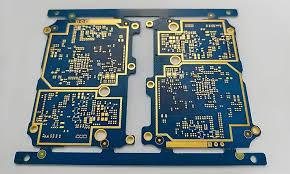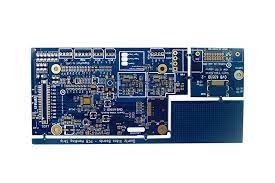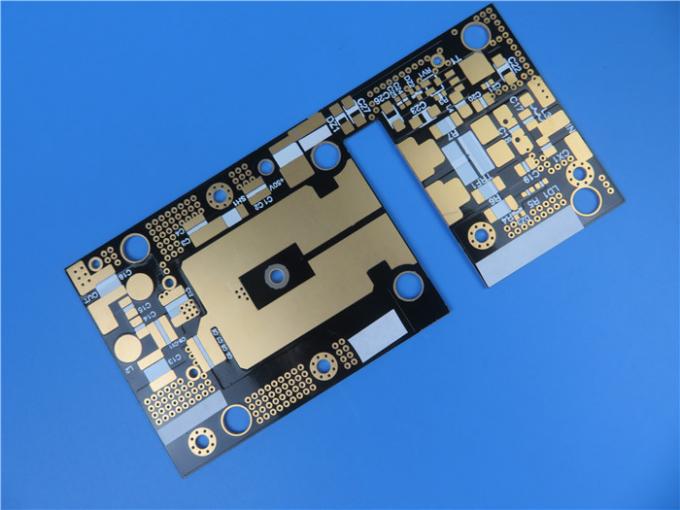Next-generation 5G routers operate across 2.4, 5, and 6 GHz bands while supporting high-speed MIMO data streams and concurrent RF channels. Maintaining signal integrity, low insertion loss, and impedance accuracy across multilayer PCB architectures is critical for throughput, link stability, and network reliability. Low-loss PCB laminates (Dk ~3.0 ±0.04, Df ~0.0012 @10 GHz) provide minimal...
HomeCategory
PCB Manufacturing Services | High-Quality PCB & PCBA - KKPCB
Next-generation RF sensing architectures, including automotive ADAS radar modules, industrial LiDAR, and high-resolution environmental sensors, demand wideband signal fidelity, minimal mode conversion, and low insertion loss across multilayer PCB interconnects. Phase stability and impedance accuracy are critical to ensure precise beamforming, timing synchronization, and high-speed data acquisition. Multilayer HF PCB laminates with controlled dielectric properties...
High-density microwave amplifiers, widely used in radar, satellite communication, and 5G mmWave systems, operate under intense thermal stress and high RF power. Maintaining ultra-low insertion loss, precise phase stability, and tight impedance control is critical to ensure amplifier efficiency, signal fidelity, and overall system reliability. RO4835 PCB laminates (Dk = 3.48 ± 0.03, Df =...
Wideband radar processing units operating in 8–40 GHz and beyond require multilayer HF PCBs with precisely aligned dielectric layers to maintain ultra-clean electromagnetic performance. Signal integrity, insertion loss, and phase stability are critically sensitive to stackup alignment, trace spacing, and dielectric uniformity. KKPCB leverages precision-laminated multilayer HF PCB substrates, low-roughness copper, and impedance-calibrated routing to...
Automotive ADAS radar systems are now operating at higher frequencies, tighter channel spacing, and more aggressive signal-processing thresholds than ever. Under these conditions, the performance of an Impedance Controlled PCB becomes a dominant factor shaping radar detection accuracy, phase stability, and immunity to signal degradation. Engineering teams focusing on 77–79 GHz radar modules increasingly recognize...
5G communication systems rely on stringent impedance accuracy, low insertion loss, and predictable phase stability to maintain signal integrity across multi-gigabit transmission channels. At mmWave and sub-6 GHz bands, even slight deviations in controlled impedance routing can introduce reflection, jitter accumulation, and eye-diagram degradation.Impedance Controlled PCBs engineered for 5G must balance dielectric uniformity, copper surface...
Next-generation automotive ADAS sensing modules, including 77–81 GHz radar, LiDAR, and mmWave sensor arrays, require PCBs with ultra-stable dielectric properties, low insertion loss, and phase-coherent RF routing. Performance depends on maintaining consistent Dk/Df, low-loss mmWave signal propagation, and minimal EMI, even under harsh thermal cycling, vibration, and humidity conditions in vehicles. High-frequency sensor PCB...
Al₂O₃ PCB platforms have become a critical foundation for next-generation automotive control units, particularly in systems where high thermal load, vibration resistance, and electrical stability determine long-term reliability. As automotive architectures evolve toward high-power ADAS sensors, electric powertrain modules, and high-density ECU clusters, alumina PCB substrates provide the mechanical strength and heat dissipation efficiency required...
Advanced Driver Assistance Systems rely heavily on 77 GHz automotive radar modules, where the ADAS PCB directly determines signal integrity, insertion loss, dielectric stability, and system-level thermal reliability. As radar sensors expand from single-beam to multi-beam architectures, PCB materials and stackup selection have become primary constraints for RF linearity and long-distance object detection. The objective...
High-density microwave power amplifier platforms demand PCB materials capable of maintaining stable dielectric performance, high RF power efficiency, and long-term thermal robustness under continuous high-power loads. RO4835 PCB substrates are engineered precisely for these conditions. By combining a tightly controlled dielectric constant, low dissipation factor, and excellent oxidative stability, RO4835 PCBs offer a reliable foundation...











